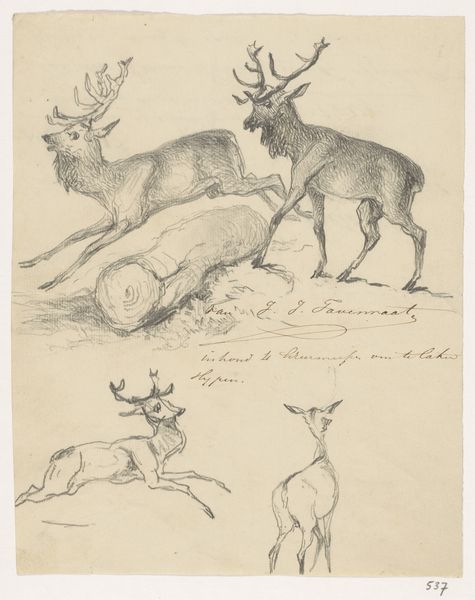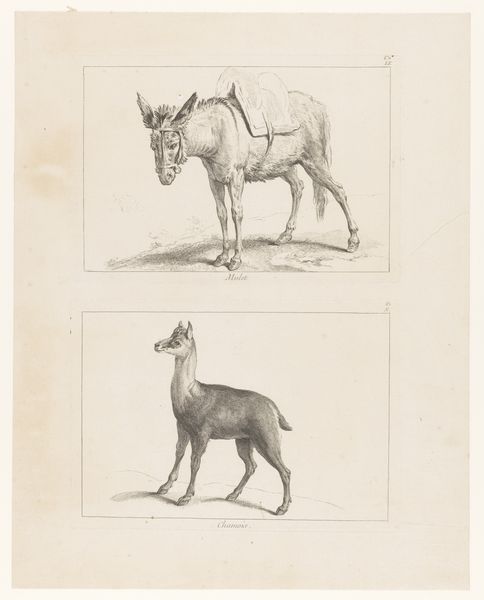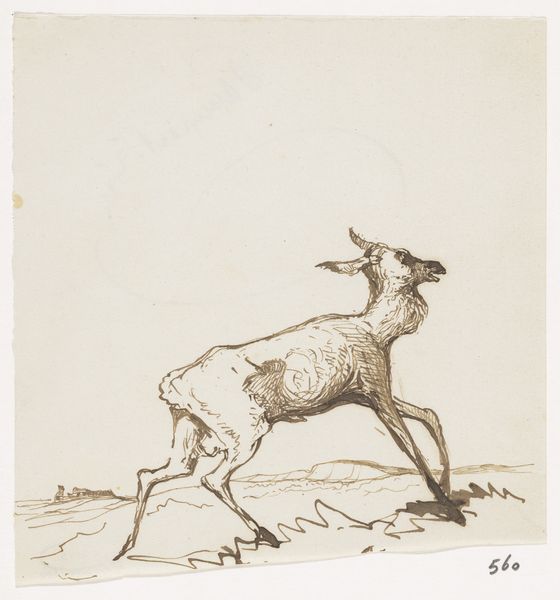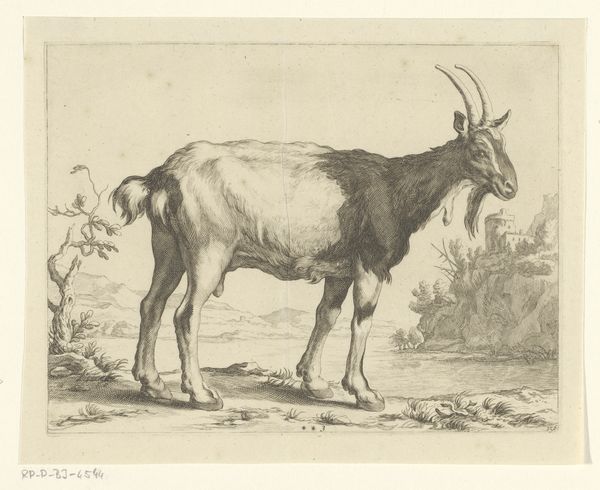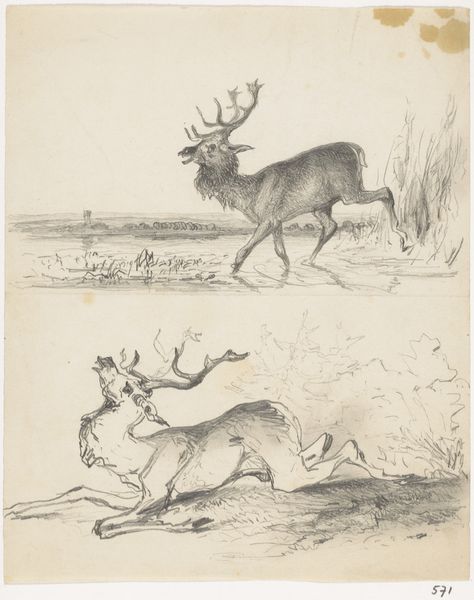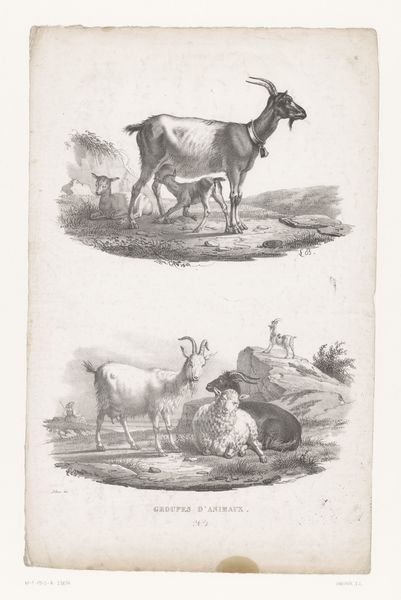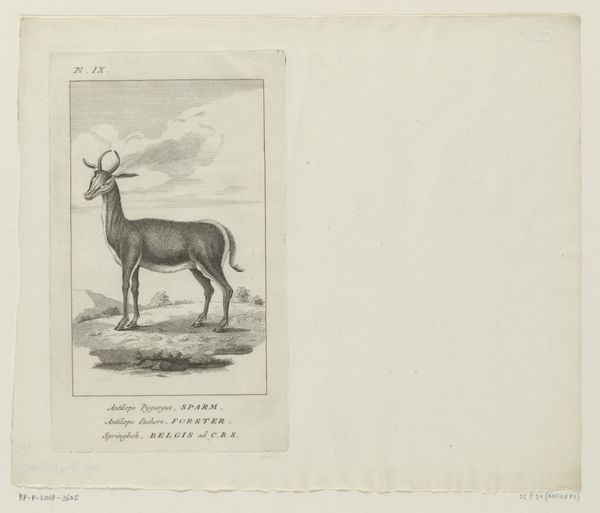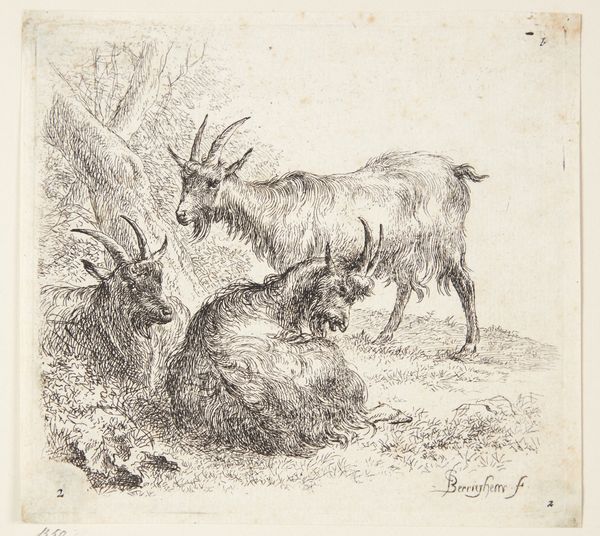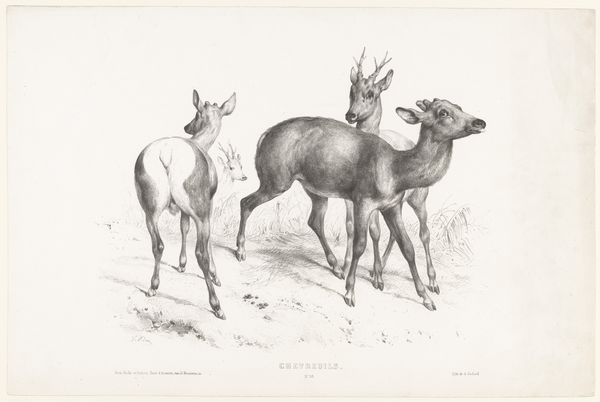
print, engraving
#
baroque
#
animal
# print
#
engraving
#
realism
Dimensions: height 225 mm, width 320 mm, height 570 mm, width 451 mm
Copyright: Rijks Museum: Open Domain
Editor: This print, titled "Blad met twee platen: gazelle en vos," was created between 1740 and 1745 by Johan Eric Rehn, using engraving techniques. The fox looks particularly agitated. How would you interpret this work, looking beyond just the depicted animals? Curator: It’s interesting to consider this print through a materialist lens. How do you think the act of engraving itself, the labor involved in producing these precise lines, impacts the way we perceive these animals and their relationship? Consider the cost of paper, the artist's time - who would have purchased such a print, and why? Editor: Well, the gazelle seems very calm and still, while the fox is dynamic. Maybe the artist’s labour is trying to highlight the inherent, maybe even manufactured, conflict between them. Was it aimed at a specific consumer? Curator: Exactly. These prints likely circulated amongst a specific clientele – perhaps wealthy landowners interested in natural history or even using these images to adorn their estates. Consider, too, that the act of reproducing these images democratizes access to depictions of nature. How does that tension between elite patronage and broader access shape the meaning of this work? Editor: I guess, in a way, it brings nature to the privileged while suggesting their dominion over it. Curator: Precisely. Now, how does the use of printmaking – a process of reproduction – challenge the traditional notions of originality and artistic genius usually attributed to painting during this era? Does this "lesser" status change the art itself? Editor: That’s interesting. It does highlight the work involved, rather than pure "genius." I'm now considering this image as less about Baroque "style", and more about class and consumption of natural resources. Curator: Indeed. Examining the materials and means of production encourages us to look critically at the social and economic forces shaping artistic expression in the 18th century. Editor: I'll never look at a simple animal print the same way again. Thanks for showing me a whole new approach to art!
Comments
No comments
Be the first to comment and join the conversation on the ultimate creative platform.
